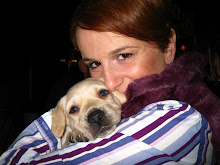
At the heart of Semana Santa are the brotherhoods (Hermandades y Cofradias de Penitencia). The brotherhoods are made up of Catholic lay persons, whose membership is usually a matter of family tradition.

There are approximately fifty nine brotherhoods that make the stations of penance from their affiliated parish church to the Cathedral.

Dressed in their habits, having a distinticve pointed hood, brotherhood members march in pairs and in silence, often barefooted, holding a candle, which is only lit at night.

Others hold incense whilst those known as penitentes carry wooden crosses a sign of public penance. Whilst they wear the habit of the brotherhood, their hood is not pointed.

The earliest known brotherhood (Primitiva Hermandad de Nuestro Padre Jesús Nazareno, known as El Silencio - The Silence) was founded in the mid 14th century. El Silencio, as the name implies, is followed by the watching crowd in silence in the early hours of Good Friday. This procession has a great following, with people thronging the area hours before the start to secure a good place. The very thought of trying to squeeze in is unheard of, and the looks such “invaders” get are enough to silence anyone!

Processions are elaborate affairs. The entire scene, although sombre is at the same time alive with colour and sound. Marching bands of bugles and drums play music, known as the marcha procesiónal - which influences the pace and action of the pasos (religious statues). Some processions, such as El Silencio, march in silence and without music. In key locations the procession stops for a Saeta – a very emotional flamenco solo mournful song sung acappella from balconies. The Saeta echoes through the streets making people feel the solemnity of the Passion, Death and Resurrection of the Lord.

Each procession starts with the Cruz de Guía – (Guiding Cross). The Cross marks the way for the rest of the procession which sees members of the various brotherhoods carrying various effigies of Christ on the Cross, the Virgin Mary and other floats representing the stages of the Passion.



The early hours of Good Friday constitute the most important time of the Seville Easter week celebrations. That night, some of the most venerated statues make their way through the streets, such as Jesús del Gran Poder, la Macarena, el Cristo de los Gitanos and La Esperanza de Triana which is sees the Virgen de la Esperanza which is the most adored and revered Virgin of the city of Seville.

Whether out of piety or curiosity, Semana Santa is a centuries old tradition, bringing people from different religions and parts of the world to experience the ambience and aura of such an occasion.
From exercising restraint from hitting the loud tourist who just pushed you off your precarious piece of pavement, or the deep breath you take when somebody stands on your foot with their pointed stiletto to the smell of orange blossoms, incense and candle wax and despite the fact that Malta has a good tradition of Good Friday processions, Seville’s Semana Santa is one thing that should be on your list of things to do before you die.
Photos copyright Maria Vella-Galea 2008
